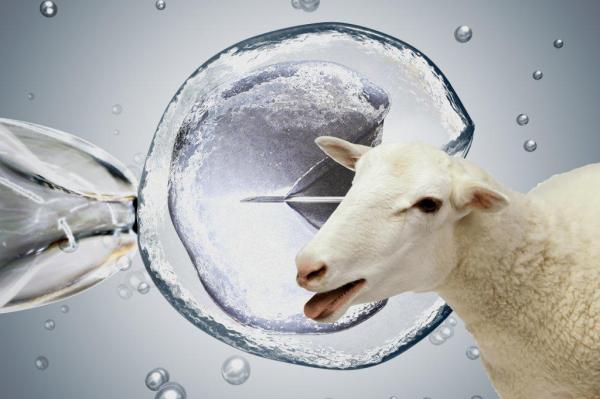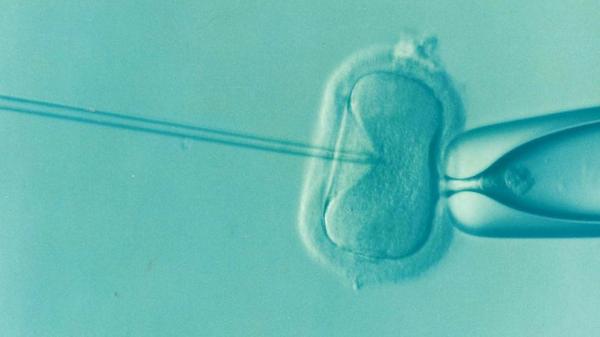
Transgenic animals are animals that have been cloned. The medical and biotechnological uses of animal cloning are almost innumerable, as many diseases have been eradicated thanks to the production of these transgenic animals. Due to the controversial concept of cloning and scientific testing on animals, there are many questions that revolve around this topic. The most commonly asked question remains: what are the uses, advantages and disadvantages of transgenic animals?
In this AnimalWised article, we will be explaining what transgenic animal are and what the production of cloning animals includes. Additionally, we will be presenting you with some examples of transgenic animals.
What is transgenesis?
Transgenesis is the procedure through which genetic information (DNA or RNA) is transferred from one organism to another. This results in the second organism and its descendants being grouped as transgenic animals (cloned organisms). Not all of the complete genetic material is initially transferred, only one or several genes, which have been previously; selected, extracted and isolated.

Definition of transgenic animals
Transgenic animals are those that have been genetically modified.
Theoretically, all living beings can be genetically manipulated. Animals. such as: sheep, goats, pigs, cows, rabbits, rats, mice, fish, insects, parasites and even humans have previously been used in this modification process. Mice, however, are the most popularly tested animals in genetic modification studies.
The use of mice as a subject has proven easier and more beneficial to scientists than the use of other animals. A mouse’s organism can easily manipulate new genetic information within its cells. In addition, the transmission of the chosen genes to the progeny has proved to be quite simple. Mice are also great subjects because they give birth to numerous and large litters, providing the scientific test more chance of success. These animals are also easy to handle physically. A mouse’s genome is also very similar to that of a human, adding strength and important to the research.
The use of animals for testing has naturally been an incredibly controversial topic within animal rights. The FDA released three documents addressing animal cloning for public comment in 2006, introducing its development of a risk management plan. This plan aims to monitor used technology for animal cloning. In addition, they aim to survey the animals used in testing and cloned animals, recording any ongoing health issues. FDA concluded that they neither support or object to the cloning of animals.
However, despite its controversies, it is important to understand how this cloning is carried out. There are many techniques in transgenic animal production. These processes include, for example:
Transgenesis by DNA microinjection:
This is one of the most commonly used methods of transgenesis.
- First, a female mouse is hormonally induced to superovulate and then mate.
- Once the eggs are fertilized, they are removed and isolated.
- In the second phase, the zygotes (cells resulting from the union of the egg and a sperm naturally or through fertilization in vitro or in vivo) are microinjection with a solution containing the DNA selectively chosen to add to the genome.
- These already manipulated zygotes are then reintroduced into a pseudopregnant female mouse: so that the gestation can take place in a natural environment.
- Offspring are then given opportunity to grow and be weaned.
- They are then checked through a Tail blotting method (extracted blood from tail) to identify whether the transgene (external DNA) has been ‘‘successfully’’ incorporated into the genome.
This method is considered as non-homologous, meaning that the injected DNA could integrate randomly into the genome[1].
Transgenesis by manipulation of embryonic cells:
In this technique, instead of using zygotes, the transgene is introduced into Embryonic Stem cells (ES cell). These cells are extracted from the blastula (animal embryo at early stage of development). They are then placed into a solution that prevents the cells from differentiating, keeping them as stem cells. Subsequently, the foreign artificially constructed DNA solution is introduced. These ‘‘newly’’ injected cells are then re-implanted in the blastula, which is reintroduced into the maternal uterus.
This embryonic stem cell manipulation is homologous, meaning that the DNA is created in such a way that it fits into a specific combination within the genome[2].
Examples of transgenic animals
There are a history of animal cloning studies that have been conducted on different animals. These animals and methods include:
- Frogs: in 1952 cloning of frogs through nuclear transfer.
- Dolly the sheep: 1994, first mammal cloned from a somatic cell nuclear transfer.
- Cows, Noto and Kaga: were cloned in Japan in order to provide for better meat and milk production.
- Mira the goat: cloned in 1998, Mira was the precursor of engineering cattle that were created in such a way to be able to ‘‘produce’’ drugs useful to the human body.
- CC the cloned cat: in 2001, the company Genetic Savings & Clone, cloned a domestic cat for commercial purposes.
- Zhong Zhong and Hua Hua the monkeys: these two were the first primates to be cloned with the same techniques used for Dolly in the year 2017.

Transgenic animals: advantages and disadvantages
Currently, transgenesis is a very controversial issue for several reasons. The positive and negatives of cloning vary on the country where it is taking place, the laws within that country and how the animal welfare is regulated and taken into consideration.
The advantages and disadvantages of animal cloning may include:
Advantages
- Improvement for research, from the point of view of genome.
- Benefits for animal production and health.
- Advances in studies of animal and human diseases, such as cancer.
- Drug production.
- Organ and tissue donation.
- Creation of genetic banks to prevent the extinction of the species.
Disadvantages
- By modifying existing species we can put autochthonous species at risk.
- The introduction of new proteins when they previously did not exist: can cause the appearance of allergies.
- The place where the new gene is placed in the genome may be, in some cases, indeterminate. Therefore, expected results may be incorrect.
- Live animals are used, so it is essential to do an ethical examination and determine how novel and important the results of the experiment could be. [3]

If you want to read similar articles to What Are Transgenic Animals?, we recommend you visit our Facts about the animal kingdom category.
1 Genetic Transformation Of Mouse Embryos By Microinjection Of Purified DNA. Yale University, Department of Biology and Department of Human Genetics.
2 Embryo-Derived Stem Cells: Of Mice and Men. University of Edinburgh, Centre of Genome Research.
3 Use of Transgenic Animals in Biotechnology: Prospects and Problems. Acta Nature. NCBI.
1 https://www.fda.gov